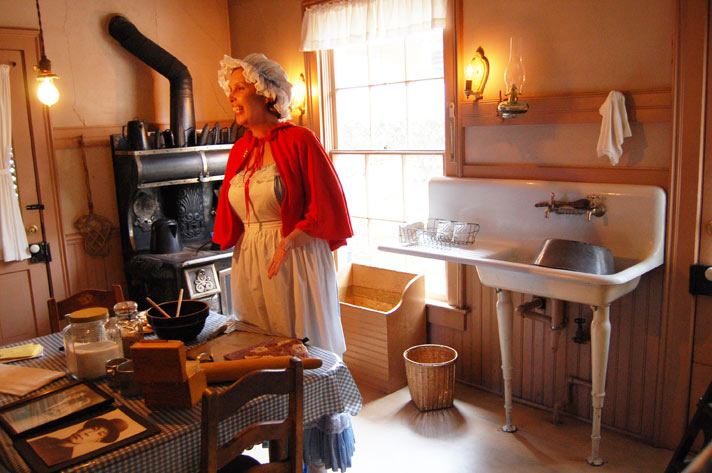Speaking of Antiquing – December 2016/January 2017
The “center” of every home is typically the kitchen, in large part because that’s where the hub of activity is. Kitchen items from the depression era and older are the items that collectors are generally most interested in. They evoke a feeling of nostalgia for comfort, warmth and functionality in the simplest item. Vintage kitchen tools are being collected and used by young generations that have no memories of their parents or grandparents using them. This could be due to quality in workmanship that is largely lost today or a desire for simpler times. But many of us know that simpler times does not always mean easier times. Work was generally involved relating to these items.
Kitchens went from the large open fire hearths with heavy swing arms for large cauldron kettles, to cast iron stoves in 1840. The first stoves could burn either wood or coal, or both. Enclosed stoves revolutionized house design and functionality. The large ornate cooking stoves of the Victorian era were manufactured by the thousands in hundreds of foundries across America. They gained respect, worldwide, for their efficiency and beauty. They became the centrepieces of homes, used for cooking and heating. Hot water for bathing became a luxury.
Larger homes had an additional stove in the parlour. These stoves were for heat and typically a pot-belly type. These stoves were highly ornamental with mica windows in the feed doors, gilt feet, porcelain handles, and decorated doors. These would be considered collectible today if still functional.
Wood cook stoves have gone through many evolutions from wood and coal to wood/electric or wood/gas conversions. This allowed the stove to be used in summer months indoors, eliminating the need for a “summer kitchen.”
When wood stoves were phased out of fashion and removed from homes, homeowners now needed to cover the flue holes. Metal plates fitted the holes, often decorative and whimsical. They are now getting scarce and are collected for their artwork.
Stoves were sometimes removed and set out in yards where they rusted in-place. Some stoves were placed in barns and out-buildings for additional heat. It pleases me to know that there are stove collectors and restorers that can make the old new again. They restore the functionality and beauty of these old beasts to today’s codes and standards and are being used and loved by new generations.
Parts and pieces of old wood stoves are highly collectible. Griswold made many flue dampers that are collectible. Feed doors, especially ones with manufacturer’s names and decoration are a treasure. The feet and stand bases are being repurposed with burner plates and burner lifts getting harder to find.
Vintage wood caddies and pokers grace many hearths today. Kindling is being stored in large copper or brass pots that were once used on the large stoves of yesteryear.
After 40+ years of living in Oregon and using wood heat, I still take much pleasure in firing up my Quadrafire. My forged poker, hatchet, and vintage shovel are stored in the old coal scuttle on the hearth.
Featured image is of volunteer docent with old woodstove in kitchen at Beekman House.

 Margaret Barns is co-owner of Pickety Place Antiques & Collectibles located at 130 N. 4th Street in Jacksonville. LIKE them on
Margaret Barns is co-owner of Pickety Place Antiques & Collectibles located at 130 N. 4th Street in Jacksonville. LIKE them on